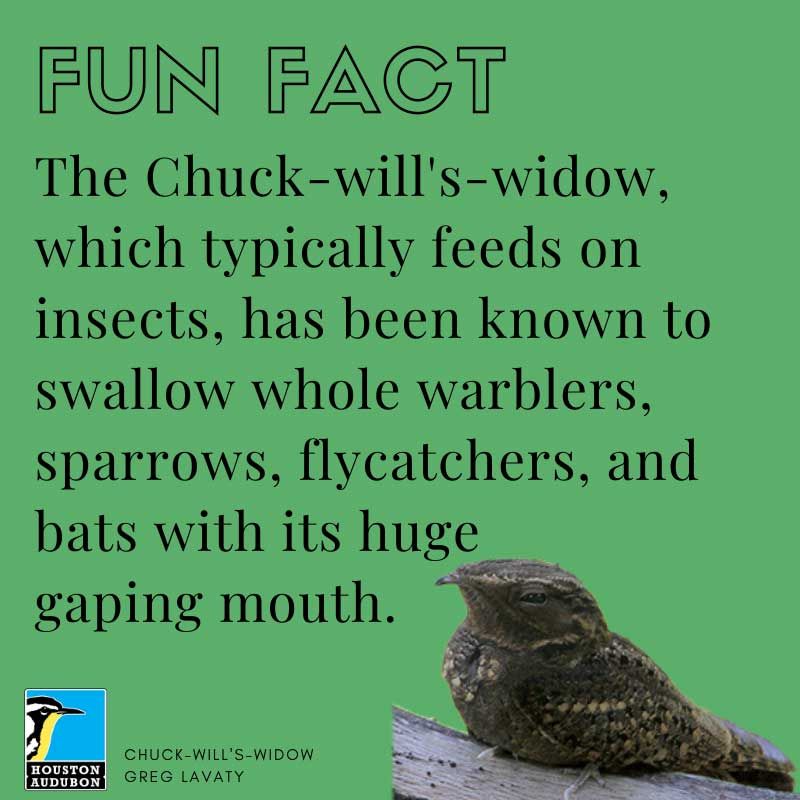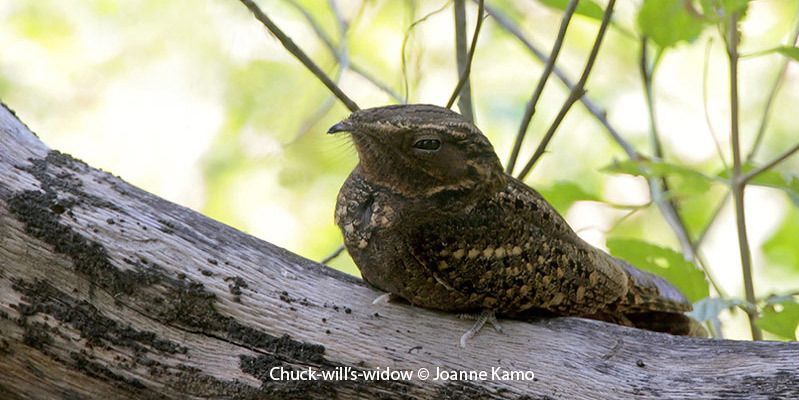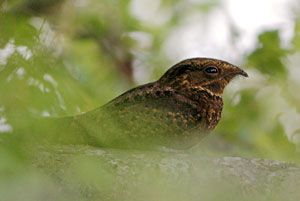
© Greg Lavaty
Chuck-will's-widow
Antrostomus carolinensis
Family: (Caprimulgidae) Nightjars
Preferred Habitat: Woodlands, open habitats.
Seasonal Occurrence: Most common in spring and fall.
Profile by Meghan Anne: Chuck-will's-widow is our largest nightjar but is still extremely well camouflaged and a challenge to find during the day. They will be on the ground or perched on a low horizontal branch. They are a warm brown color overall, with delicately patterned feathers that make them disappear into bark or dead leaves. Their wings are entirely brown, and they have white inner webs of their outer tail feathers, which you will often not see in flight. If you flush one by chance, they can be quickly distinguished from the Whip-poor-will which has prominent white corners on the tail, and the Common Nighthawk, which has bold white slashes in the wings. If you haven't found them during the day, you will certainly hear them repeatedly calling their name through the night, the first "chuck" very soft.
This nightjar breeds through the Southeast and Mid-Atlantic, including east and central Texas. During migration you may find them closer to the coast, one was spotted this week at Boy Scout Woods Sanctuary in High Island, and more are likely to be seen and heard throughout April. They nest on the ground in a variety of dry woodlands, including pine and deciduous forests.
Chuck-will's-widow is an aerial forager. They fly low over the ground hunting for flying insects, mostly moths, beetles and dragonflies. Very occasionally they have been reported eating small birds and bats, including a number of warblers. They have long stiff "whiskers" -which are actually feathers- around their bill. These specialized feathers are called rictal bristles, and it is thought that they help guide prey into their mouth and protect their all-important vision from prey hurtling toward their faces.
Profile by Nick Minnich: The Chuck-will's-widow is the largest North American member of the nightjar family. Caprimulgidae, colloquially referred to as goatsuckers, get this unusual nickname from a folk belief that the birds would milk goats with their enormous mouths each night as they’re nocturnal. Like other nightjars, Chuck-will's-widows forage at dusk and dawn searching for insects. The specialized rictal bristles help funnel prey into their mouth, and they occasionally swallow small birds and bats along with insects.
“Chucks” are predominantly insectivores and are almost entirely nocturnal. Along with their specialized feathers for hunting, these birds are also well-equipped with highly mottled plumage that allows them to camouflage against tree bark, leaves, and the rest of the forest floor. While most of the nightjars share this camouflage plumage, the most similar-looking species is the Eastern Whip-poor-will. On average, the Eastern Whip-poor-will is smaller and grayer than the Chuck. Additionally, Chucks possess black streaking visible on the crown as opposed to the Eastern Whip-poor-will's bold median crown stripe with prominent rufescent coloration and barring on the tail. Chuck-will’s-widows are large and chunky with a large head as well, especially when being compared to a petite Whip-poor-will.
Chucks are, of course, heard more often than they are seen due to their nocturnal behaviors and abundant camouflage. This cryptic bird’s name is a simple onomatopoeia of their call. This unmistakable call is certainly the best way to identify and observe this species; however, Chuck-will's-widows are often faithful to their roost sites. Simply put, Chucks, as well as other nightjars, tend to be found if they’re flushed. Recently (February 2025), a Chuck was found at Smith Oaks Bird Sanctuary by Houston Audubon staff during habitat management and privet removal. We were able to find the bird again later and confirm its identity with subsequent photos that were taken. Chucks are occasionally encountered on the Upper Texas Coast during the colder months, but there’s been only one other mid-winter record of the species for High Island. Chuck-will’s-widows breed in the forests of the Southeast and Mid-Atlantic states. They tend to inhabit more open areas than Whip-poor-wills and simply lay their eggs on the forest floor as opposed to making any sort of nest. In the winter, the birds often travel to woodlands and fields as far south as Colombia, Venezuela, and the Caribbean.
There is an overall decreasing trend of Chuck-will’s-widows across the United States. One factor which heavily impacts these nightjars is the usage of pesticides, due to their highly concentrated insect diet. Additionally, habitat loss on breeding and wintering grounds is an increasing threat. According to the North American Breeding Bird Survey, Chuck-will's-widow numbers have cumulatively declined by about 58% since 1966.
-
Cornell Lab of Ornithology
-
Bird Guide
-
National Audubon
-
Bird Library
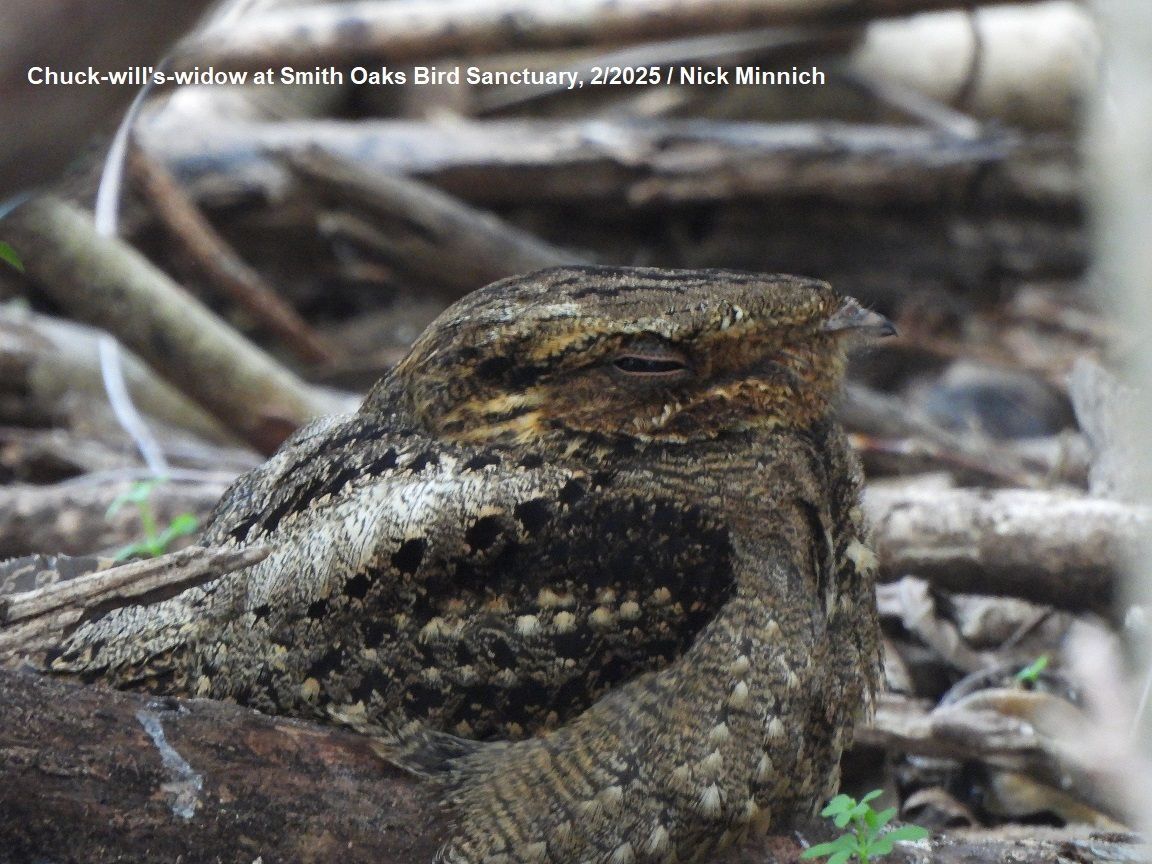
© Nick Minnich
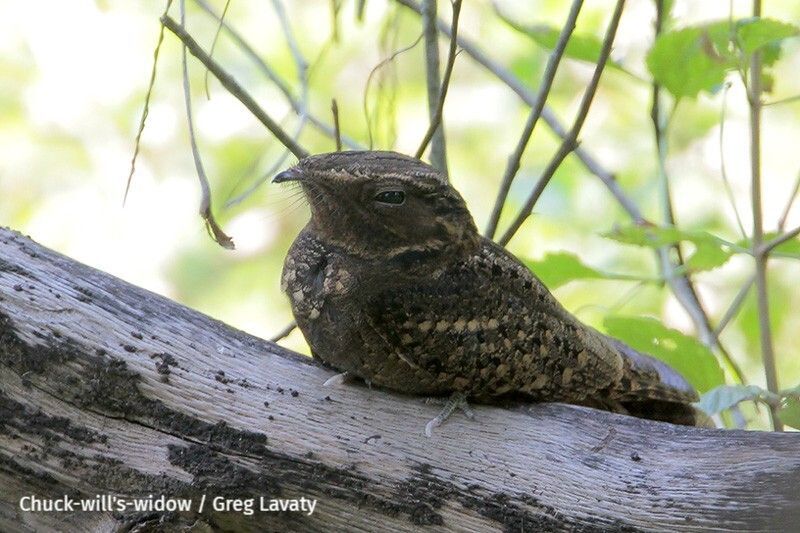
© Greg Lavaty, www.texastargetbirds.com
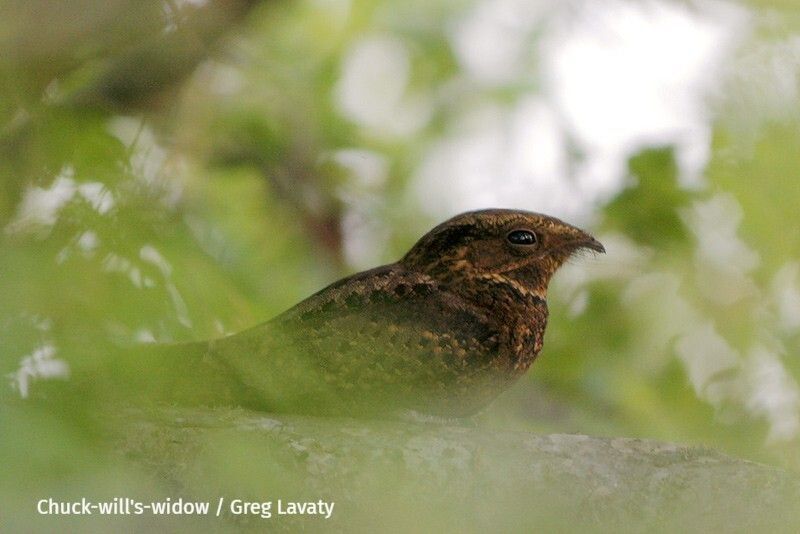
© Greg Lavaty, www.texastargetbirds.com
